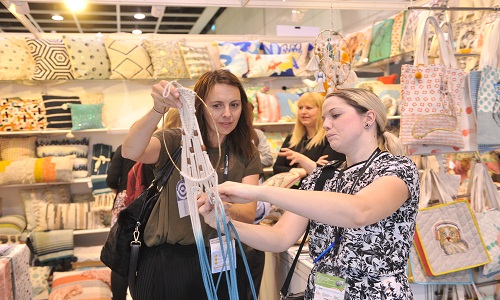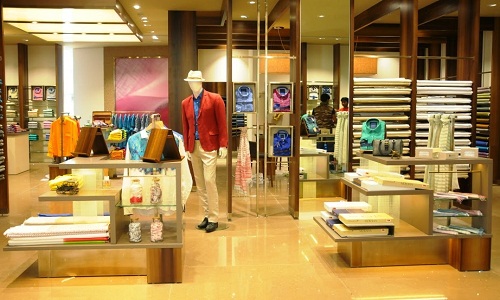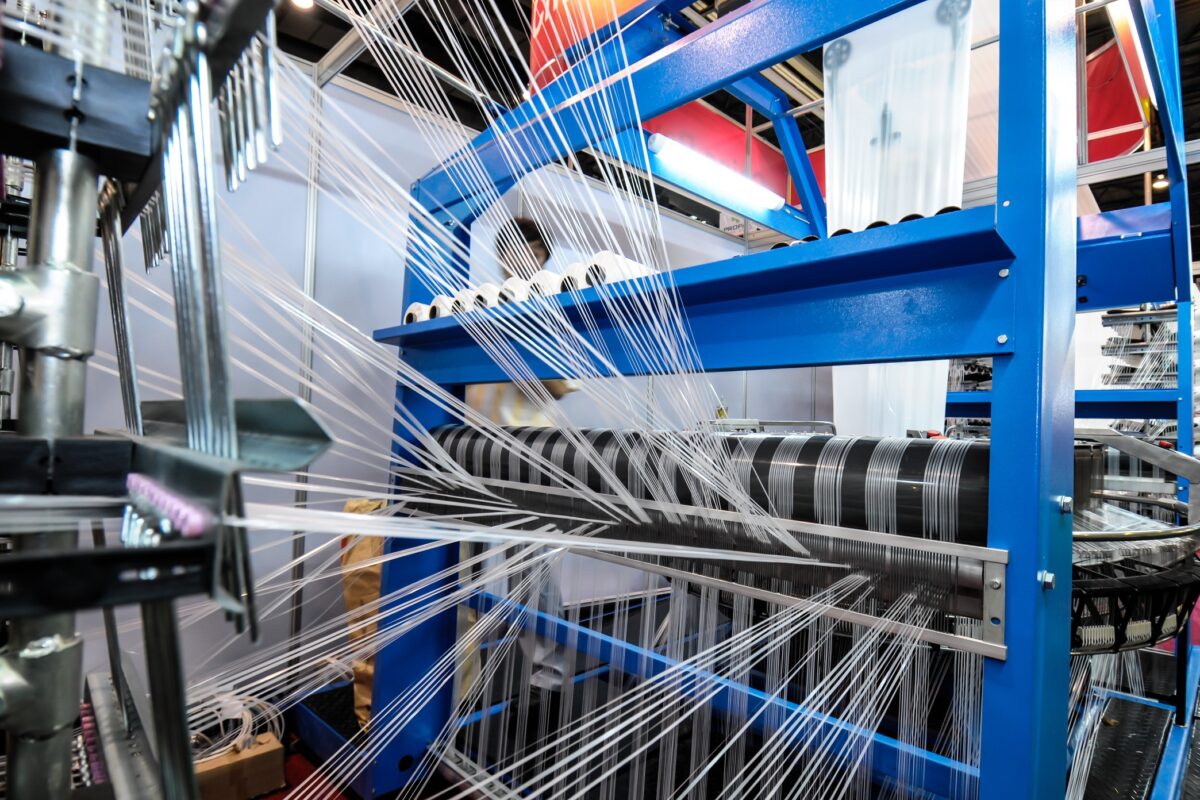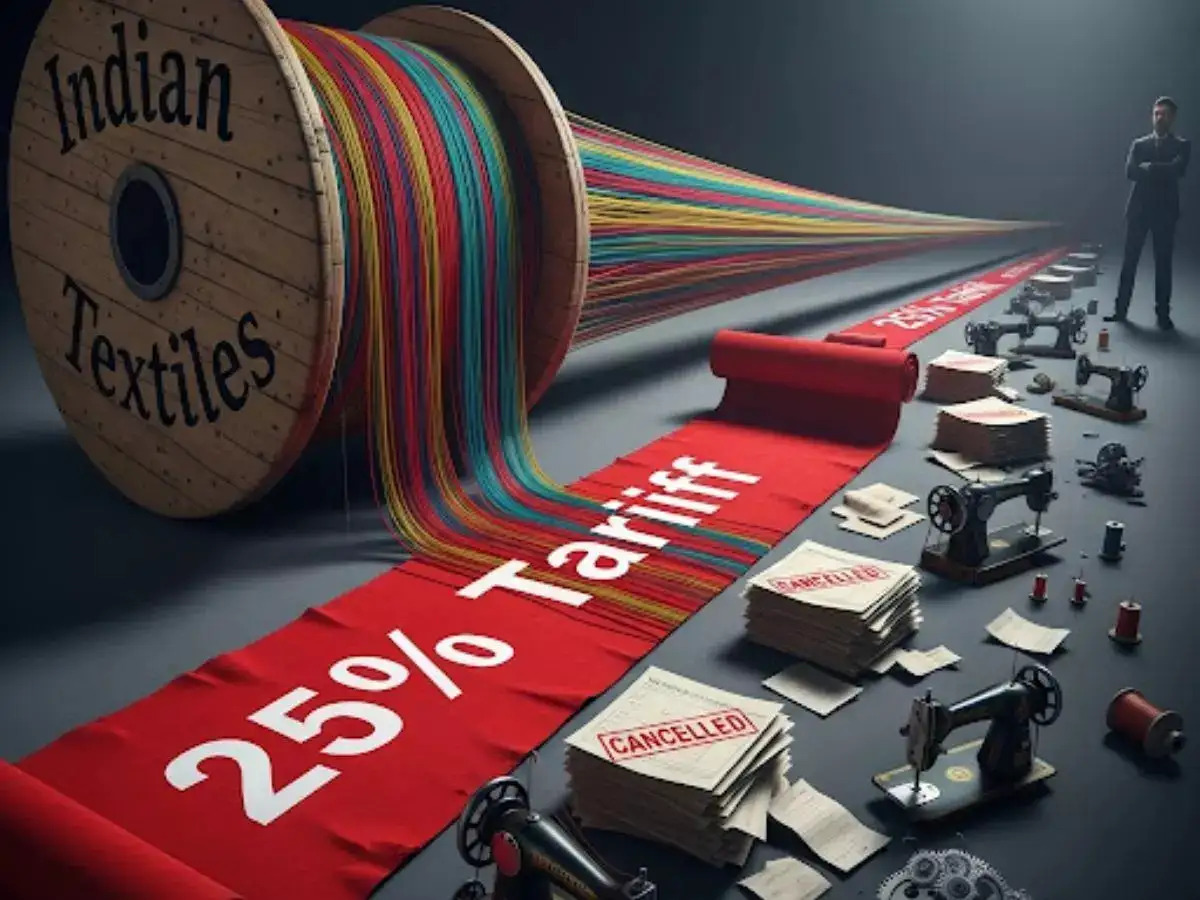FW
Italy’s textile imports from China fell 8.7 per cent in the first 10 months of last year. Narrowing price difference with China means Italy’s wool industry is now having demand from domestic customers. International textile buyers are increasingly switching away from China, and back to Western suppliers, as rising labor, raw material and energy costs make the world’s dominant producer more expensive.
At the same time, China’s textile sector faces rising costs of inputs such as cotton and wool, hefty import taxes for basic manufacturing equipment, and costlier environmental rules. Higher costs are weakening China’s international advantage and it faces a double whammy from developed countries - like Italy - with better technology and developing countries with lower wages.
The labor cost gap between Italian and Chinese yarn narrowed by around 30 per cent between 2008 and 2016. The hourly wage for a Chinese weaver has been up 25 per cent since 2014. The wage in Italy has been up nine per cent over the same period. Western clothing brands are under pressure to offer more collections and customers increasingly want customised looks. Their suppliers need to be closer. In China, the supply chain is not close and is scattered giving Italy a competitive advantage.
"HKTDC is gearing up to hold the 32nd edition of Hong Kong Houseware Fair that will run from April 20-23, 2017 at the Hong Kong Convention and Exhibition Centre. The fair will attract over 2,200 exhibitors, who will showcase a wide range of quality household items from around the world. Demand for housewares has been strong in Asia. And according to Statista, a leading statistics company, the global ‘Furniture & Homeware’ segment is worth around $115 billion in 2017, and is expected to grow by 12.4 per cent annually."
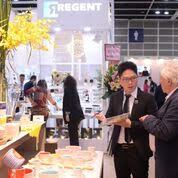
HKTDC is gearing up to hold the 32nd edition of Hong Kong Houseware Fair that will run from April 20-23, 2017 at the Hong Kong Convention and Exhibition Centre. The fair will attract over 2,200 exhibitors, who will showcase a wide range of quality household items from around the world. Demand for housewares has been strong in Asia. And according to Statista, a leading statistics company, the global ‘Furniture & Homeware’ segment is worth around $115 billion in 2017, and is expected to grow by 12.4 per cent annually. Over half of the revenue is generated in Asia ($58 billion), indicating abundant business opportunities in the industry in Asia. In 2016, over 28,000 buyers from 114 countries and regions attended the sourcing fair. As Asia’s leading houseware event, the fair is an ideal one-stop trading platform for quality household items.
Products galore at ‘LIFE’ themes.
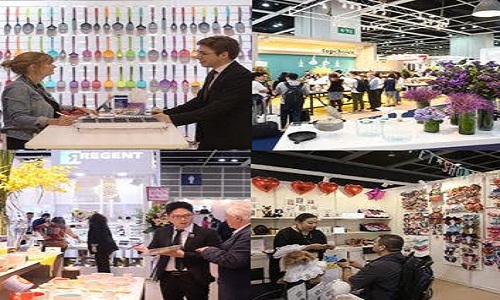
This year, the Fair celebrates aspects of ‘LIFE’, which stands for ‘Lifestyle’, ‘Interior’, ‘Feast’ and ‘Enrich’ zones Under the theme ‘lifestyle’ are the ‘Hall of Elegance’, ‘World of Fine Dining’, ‘World of Fine Décor’, ‘World of Pet Supplies’, ‘Green Living’ and the new zones, ‘Coffee Alley’, which offers coffee-related products like coffee makers, grinders and mugs; and ‘Designers’ Furniture’, which showcases designs from traditional crafts to contemporary designs.
‘Interior’ features exhibitors of product zones like ‘Interior Décor’, ‘Festive Décor’, ‘Best of Asean’, as well as ‘Creative Arts & Cultural Craft’, ‘Feast’ Includes ‘Tableware’, ‘Wine Tools & Accessories’, ‘Kitchenware & Gadgets’, ‘Home Appliances’ and the new ‘HORECA zone’ which features catering and decoration products related to the industry.
The ‘Enrich’ theme is designated for debut ‘World of Building & Hardware’, as well as ‘Homepedia’, ‘Baby Products’, ‘Bath Beauty & Healthcare’, ‘Home Cleaning & Laundry’, ‘Storage Solutions’, ‘Outdoor & Gardening’ and ‘Furniture’.
Design-led merchandise converge at highlighted zones
‘Hall of Elegance’ will present over 40 prestigious exhibitors including Berndes, bzyoo, Happycall, JIA, Kakiemon, Laica, PinJang, R2S, Thomson Pottery, Topchoice, and TVS. A broad range of designer collections will showcase innovation and top-notch craftsmanship. ‘World od Fine Dining’ will put the spotlight on newest designs of tableware, kitchenware and bar accessories. Top brands include Wilmax from Hong Kong, KOKUBO from Japan, and Glasslock from Korea, etc. ‘World of Fine Décor’ will highlight premium home accents, furniture, artificial flowers, outdoor living and home tech. It is an ideal platform for designers to build their brands and to put their cutting-edge designs on display.
‘World of Building and Hardware’ debuts
The debut ‘World of Building and Hardware’ will showcase quality building materials, hardware & DIY tools, as well as sanitary ware. The dedicated platform aims to attract traders and interior designers who are looking for the latest items for interior projects and contract business.
‘World of Pet Supplies’ returns
With growing popularity of pet-related products, the ‘World of Pet Supplies’, offers a dynamic marketplace for sourcing basic items and pampering products for all kinds of pets. Exhibitors will showcase their trendy products and demonstrate their latest products through a series of pet supplies product demo.
Design trends under spotlight
One of the highlights will be the trend concept displays. In collaboration with A+A Design Studio, a well-known Italian trend forecast agency for the first time, a wide spectrum of houseware and interior design elements will be on display to unveil the Spring/Summer18 design trends.
Concurrent fair creates synergy
Held concurrently under one roof is the HKTDC Hong Kong International Home Textiles and Furnishings Fair. Sharing the same theme on household living, the twin fairs generate synergistic effect, enhance the fair experience of exhibitors and buyers, and thus offer expanded business opportunities.
"The eighth edition of HKTDC Hong Kong International Home Textiles and Furnishings Fair will be held from April 20-23, 2017 at the Hong Kong Convention and Exhibition Centre, alongside with HKTDC Hong Kong Houseware Fair, Asia’s leading event of its kind. The twin fairs will showcase a comprehensive selection of household and textile products to cater to the needs of worldwide buyers."
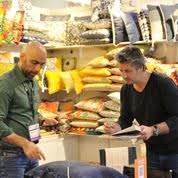
The eighth edition of HKTDC Hong Kong International Home Textiles and Furnishings Fair will be held from April 20-23, 2017 at the Hong Kong Convention and Exhibition Centre, alongside with HKTDC Hong Kong Houseware Fair, Asia’s leading event of its kind. The twin fairs will showcase a comprehensive selection of household and textile products to cater to the needs of worldwide buyers.
This year, Home Textiles and Furnishings fair gathers over 280 exhibitors from five countries and regions, presenting a wide range of household textile items including furnishings, bedding, curtains, carpets and towels. In 2016, the fair attracted over 18,000 buyers from 107 countries and regions. An impressive line-up of group pavilions from the Chinese mainland and India, including three textile industry associations from India: Handloom Export Promotion Council (HEPC), Export Promotion Council for Handicrafts (EPCH) and Carpet Export Promotion Council (CEPC), will participate. The Pavilion from Jiangsu Nantong, dubbed ‘The Hometown of Textiles’ in the Chinese mainland, will return to showcase its quality textiles.
Meeting point of top brands
‘Hall of Glamour’, the premium zone for fair, features sophisticated and design-driven furnishings and household textile products, as well as top-notch designer collections, covering bedding, curtains, carpets and towels. Branded collections include J-Tex from Hong Kong, Marushin from Japan and Shiv Shakti Exports from India.
The fair features seven themed zones with clear product categories for easy and convenient sourcing. Besides ‘Hall of Glamour’, the themed zones include: ‘Baby & Bedroom textiles’, ‘Bathroom & Kitchen textiles’, ‘Carpet & Floor Coverings’, ‘Design Solutions and Trade Services’, ‘Upholstery & Furnishing Products’ and ‘Window Fashion & Accessories’.
In view of the growing green consciousness, consumers particularly in developed markets like Japan, the US and West Europe, are enthusiastic about eco-friendly properties of natural fibres. To cater to the surging demand, the fair put emphasis on environmentally friendly and sustainable products. Exhibitors showcasing green products or hotel supplies will be labelled accordingly for effective sourcing.
A series of activities will be held during the fair to facilitate market information exchange. The Product Demo and Launch Pad session provides suppliers with golden opportunities to introduce their latest products in an interactive and relaxing atmosphere. Industry players can stay abreast of forthcoming design trends and market updates at the forums or seminars on hot industry issues.
Concurrent Fair, an added opportunity
Held concurrently is the HKTDC Hong Kong Houseware Fair. With household-related products put under one roof, the twin fairs will generate natural synergistic effect, which opens up opportunities to exhibitors and buyers worldwide.
"Obama administration last year had imposed retaliatory tariff on textiles against the trade war over Europe. These were viscose rayon staple fibres as well as Modal fibres, not carded, combed or processed for spinning, and single yarns containing 85 per cent or more by weight of artificial staple fibres coming from Europe. The proposed 100 per cent retaliatory tariffs have left US textile makers worried that new measures could increase their raw material costs and push up the price of fabrics made from rayon and Modal. Lyocell fibre, also known as Tencel, is not included under the proposed tariffs."

Obama administration last year had imposed retaliatory tariff on textiles against the trade war over Europe. These were viscose rayon staple fibres as well as Modal fibres, not carded, combed or processed for spinning, and single yarns containing 85 per cent or more by weight of artificial staple fibres coming from Europe. The proposed 100 per cent retaliatory tariffs have left US textile makers worried that new measures could increase their raw material costs and push up the price of fabrics made from rayon and Modal. Lyocell fibre, also known as Tencel, is not included under the proposed tariffs.
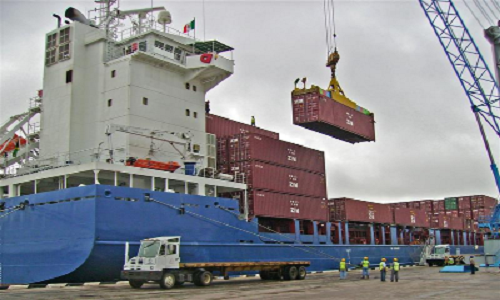
The tariffs have plenty of people worried because 41 per cent of the viscose rayon fibre imported into the US in 2015 came from Europe, translating into $72 million of fibre. Currently, the tariff on viscose rayon staple fibre is 4.3 per cent and for yarn it is 9 per cent. As Auggie Tantillo, President & Chief Executive, National Council of Textile Organizations (NCTO), which wrote a letter to the US Trade Representative opposing the tariffs explains, the imposition of an additional 100 per cent tariff would be highly disruptive to the supply chain and harm US competitiveness of rayon fiber-containing products.
Production of rayon fibre is nonexistent in the US because it is environmentally difficult to produce. It is still made in Europe and in Asia—mainly China. The US is totally dependent on off-shore sources for rayon fibre, and therefore, any penalty tariff on the product could lead to adverse ramifications for US manufacturers.
Impact on US companies
At least 10 US companies belonging to his textile group import viscose rayon staple fibre from the EU. They say additional tariffs would place an undue burden on their businesses and potentially lead to lost sales and hurt employment. One company that would be affected by the tariff is Lenzing Fibers in Mobile, Ala. The company already produces Tencel fibres, the brand name for Lyocell, at its Alabama factory. But it has plans to invest $293 million in a new fibre plant capable of producing 90,000 ton of Tencel fibre a year. The company was planning to import viscose rayon staple fibres from its plant in Austria to blend with Lyocell staple fibers made in the US to make nonwoven products such as baby wipes. The increase in duties on viscose would have a negative effect on business for this new investment, points out John Patterson, CFO, Lenzing Fibres.
Advantage China
China is a major producer of viscose rayon staple fibre. In 2015, about 50 per cent of the viscose rayon staple fibre imported into the US came from China. “Should penalty tariffs be levied on imports from the EU, the clear winner would be China,” the NCTO pointed out in its letter to the US Trade Representative. Another company that would be impacted is Buhler Quality Yarns, a Swiss company headquartered in Georgia, US. In its US factory, it manufactures yarns from Supima extra-long staple cotton, MicroModal Edelweiss and MicroTencel. They says they have to look at other fibers to sustain if this goes forward. The biggest fibre they buy is Supima, and second-largest fiber consumption is in Modal. And they need to provide yarns at a garment price point that people are looking.
In fact, the trade dispute started in 1998 when the EU lost a case at the WTO for banning American beef. In 2009, the US negotiated an agreement to allow a small degree of market access for specially produced beef that meets the EU’s standards, but that agreement did not work as intended, said the office of the US Trade Representative, which resulted in this retaliatory proposal. If the proposed tariffs go into effect, the price of Tencel yarns would become more attractive because its fibre content wouldn’t be subject to added tariffs.
"Linen is a designers’ delight because of its matchless properties. However, in India it is still considered a niche, elite fabric and consumption is low as the vast majority still don’t use it. Linen is basically a stem fibre, it wrinkles very easily. The important property of linen is its comfort. It absorbs moisture 20 times more than its actual weight without being uncomfortable to the user. One of the biggest advantage is that linen is naturally anti-allergic and anti-bacterial."
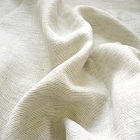
Linen is a designers’ delight because of its matchless properties. However, in India it is still considered a niche, elite fabric and consumption is low as the vast majority still don’t use it. Linen is basically a stem fibre, it wrinkles very easily. The important property of linen is its comfort. It absorbs moisture 20 times more than its actual weight without being uncomfortable to the user. One of the biggest advantage is that linen is naturally anti-allergic and anti-bacterial.
Deepa Chandran, GM, Aditya Birla Fashion & Retail says the Indian linen market is growing at 10 per cent CAGR. Currently 70 per cent linen yarn is imported.“Premium apparel brands import high quality linen. For mediocre usage, Indian fabrics are used. There is a huge potential for making premium fabrics and yarn in India,” he says. The price of linen fabrics is comparatively higher than cotton and viscose. Today, its market price stands at Rs 600 per kg. Another interesting feature of linen is that it can be blended easily with cotton, polyester, viscose and many other fabrics. Pure linen’s retail price in the market starts from Rs 1,200 per metre, while blended linen is available in the range of Rs 400 upwards depending on the ratio of linen.
Basically a European fibre, flax from which linen is made is grown in Russia, Canada, France, etc. It requires certain climatic conditions to grow at its best. Russia has made good stride in linen fibres production. European countries largely grow the fibre for exports. European fibres are considered the best, as they have long length. The longer the fibre, the better the quality of fabric, India and China too have made attempts to grow it. China grows a lot but it is not considered the best quality fibre.
In 60s and 70s, linen was synonymous with home furnishing but with experimentation and usage in the last 10-15 years, linen usage has grown in fashion and apparel sector in a big way. Giving a perspective on Indian market, Chandran says, “Linen is used in trousers and shirts majorly. A pure linen suit can cost up to Rs 16,000, 100 per cent linen shirt can cost between Rs 3,000 to Rs 8,000. Designers like to use linen a lot, blends have a good market also.”
Aditya Birla is operating through 42 countries, having diverse businesses. Linen fabric for Aditya Birla is produced in Kolkata. “Jayashree Textiles exclusively produces it for our in house. We have exclusive linen stores all across the country, Linen fabrics by Aditya Birla Group is retailed through 121 exclusive stores and over 1,000 MBOs on a pan-India basis. We are the largest linen producer despite the fact the entire raw material is imported,” he explains Chandran.
Chandran says there are many players in the market currently who produce the fabric in India. The fabric is suitable for Indian weather conditions. Talking about the concerns facing the linen market in India, Chandran says, “The level of awareness is low and fakes exist. Many blends are sold as pure linen fabrics, which do not give full advantage to the user. Buyers who understand linen contribute to the growth of the fabric in the country. The only challenges are cost and presence of similar looking fabric, which are sold at the same prices as pure linen. Indeed, it is difficult to identify pure linen from look a likes.”
Opportunities galore
There is a huge shift in usage of linen from home furnishing to fashion in the last 20 years. The presence of many global brands and international tourism will contribute immensely towards linen’s growth in India. The fabric has a lot of potential and India can capitalise on it.
The global women’s apparel market is expected to grow at a CAGR of around three per cent during the next five years. The women’s apparel market in Europe is expected to grow at a CAGR of 2.9 per cent over the forecast period. The major markets for women’s apparel are the UK, Germany, France, Spain, Russia, and Italy. In North America, the primary markets include the US, Mexico, and Canada. The US is the largest country for women’s apparel products in the world. Its contribution to the global market was 29.15 per cent in 2015, and its share in the North America was 92.22 per cent. In the next five years, women’s apparel market in North America is expected to grow at a CAGR of 3.01 per cent.
One of the fastest growing segments is luxury clothing, which is expected to grow at a higher year-over-year rate in terms of sales compared to the mass market. Luxury apparel brands such as Louis Vuitton from LVMH, Gucci from Kering, and Hermès have expanded significantly across the globe during the last five years.
With increasing number of consumers focusing on physical fitness, the active lifestyle clothing segment will also likely have greater demand over the coming years. From 2010-2015, women’s active wear and sportswear sales increased by an average growth rate of more than eight per cent.
Donald Trump’s new America First trade policy is seen as anti-free trade. His trade policies are expected to benefit certain people at the expense of others, specifically, workers and producers will benefit at the expense of consumers. The retail and the apparel industries will be hit the hardest. There is virtually no garment industry left in the US, so moving manufacturing back to the high-cost US from low-cost Thailand and China will lead to higher prices for apparel. Higher prices mean fewer sales for apparel firms and retailers. This would be a major blow to both of these struggling sectors.
The main reason a border adjustment tax (BAT) is so popular among politicians is that it is not a tariff. A BAT taxes the full value of a product made by a US firm abroad, thus encouraging producers to make products in the US. With BAT, companies that make products in the US and sell them abroad may deduct the cost of making the product and only pay tax on the net profits.
A border adjustment tax will lead to higher costs for many consumer items. The overall impact of a BAT is twofold: imports cost more (higher prices) and exports cost less (more sales for US exporters).
Sourcing at Magic will be held at The Las Vegas Convention Center from February 20 to 23, 2017. Sourcing at Magic is a subsidiary of UBM Fashion Group. With over 40 countries represented, this event offers a source of inspiration, education and resources that keeps the fashion industry moving and drives businesses. Sourcing at Magic is the fashion industry’s link to the entire global supply chain and attracts designers, brands and retailers alike. It will take a look at how US decisions may impact various free trade agreements and international trade relationships. Experts will analyze these issues and the cause and effect between the supply chain and recent challenges in the global economy such as the elimination of TPP, the continued rise of costs in China and trade issues between the US and China.
Among the highlights at the event is the President Trump seminar. With President Trump taking office, the event will take a look at how the Trump administration may impact various FTAs and global trade relationships. Experts will analyze various issues and how they will effect the supply chain. The African pavilion will have over 11 countries represented. Over the past few years, serious interest in African countries as a major sourcing destination for apparel has grown. The African Growth and Opportunity Act allows certain countries in sub-Saharan Africa duty-free access to the US market. Discussions will be on the shift of fashion sourcing to Africa and how AGOA benefit US companies producing fashion in Africa.
There will be Fabric Trend Galleries, featuring show floor exhibitors and trends for S/S ‘18 by Fashion Snoops. Morphew/Paradox NYC will be providing an insight on vintage prints, embellishments and shape concepts from around the world in a new trend display, and Pantone returns with a new Color of the Year for 2017: Greenery. Footwear at Sourcing at Magic is the only show created for brands and retailers to source their production directly from factories around the globe.
The Organization for Economic Cooperation and Development (OECD) has offered new guidelines for the garment and footwear sectors in Bangladesh. The guidelines represent a move beyond voluntary, non-binding auditing and corporate social responsibility initiatives, which have done little or nothing to protect and improve the rights of workers.
The new standards have been endorsed by brands, labor and industry, and involve real worker participation in identifying risk and violations of human rights, while encouraging direct negotiations with labor.
The guidelines allow workers and trade unions to actively participate in designing and implementing on-site supplier assessments, developing corrective action plans, monitoring impacts and formulating operational-level grievance mechanisms. Significantly, they promote responsible purchasing practices, lack of which can lead to excessive and forced overtime as well as low wages for workers. The guidelines include various modules on sector risks, including child labor, sexual harassment and gender-based violence, forced labor, working time, occupational health and safety, trade unions and collective bargaining, and wages as well as environmental hazards.
By creating mechanisms that link unions, buyers and suppliers, OECD aims to create a framework for genuine supply chain industrial relations for a fair and stable global garment industry. It sees workers not as peripheral to the due diligence process but core to it.
Mexico wants to have closer ties with the east especially Singapore.
Mexico is keen to learn from Singapore's business park expertise when it comes to its special economic zones. These zones will include tax incentives for companies investing in targeted sectors and they present an opportunity for companies in infrastructure development areas such as logistics, petrochemical complexes, utilities and water and waste treatment.
Mexico's massive new international airport is due by 2020 and the country would like Singapore's expertise in airport management and associated activities. Some Singaporean small and medium enterprises are already active in logistics.
There are about 40 Singapore companies of various sizes operating in Mexico. These include a water treatment firm, a textile firm and a plastic parts manufacturer.
As Mexico's relations with the United States have become frostier, the Latin American country is looking for new friends. It has realised that keeping all your eggs in one basket, and having 80 per cent of your output delivered to one client, is not smart in the long term.
In the wake of the collapsed Trans-Pacific Partnership (TPP) deal, of which Mexico had been a party, Mexico wants to convert the TPP into bilateral agreements with the six TPP countries that it does not already have free trade deals with.
These include Singapore, Vietnam, Australia and New Zealand.

